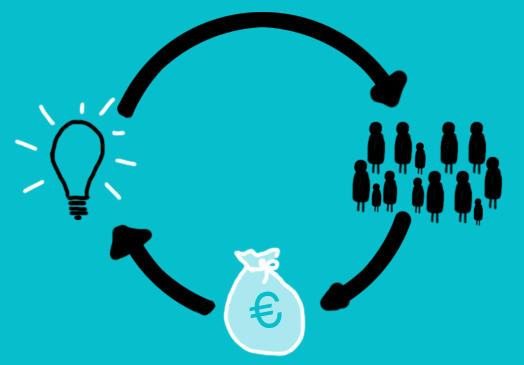Part 1 –Leveraging your crowd
I spoke to a client last week who had just launched a crowdfunding campaign on Kickstarter. He could not understand why his project had received no traction. He had a great video, his pitch was good, rewards were well-conceived and most of all, he had a great concept. All of these factors are necessary for a successful project, but he had missed a key ingredient necessary for crowdfunding success – preparation.
The competition on crowdfunding platforms is fierce, and as a result, crowdfunding by no means guarantees success. Fewer than half of all Kickstarter projects reach their funding goal, and over 10% don’t receive a single pledge, the proportion of successful projects on other platforms is even lower. Successful or not, your crowdfunding campaign is likely to feel overwhelming. Whether you succeed beyond your wildest dreams and are beseeched with questions from backers and press, or you struggle to get off the ground and resort to virtual pan-handling to beg bloggers and friends to spread the word. To give yourself the edge, preparation is key.
There are numerous things to focus on during the preparation phase of your campaign, today I’m going to focus on an area my clients often struggle with – leveraging their own crowd.
Leverage your crowd.
The majority of successful projects achieve their goal due to their own network. There are rare exceptions, but typically the project’s own network makes up over 75% of the project’s backers. How then, do you leverage your crowd?
Make a giant list of your contacts.
The first step is the easiest and quite possibly the dullest. Collate your email contact list, your Facebook friends and your twitter followers into an excel spreadsheet. Delete those (it will be the majority) that you don’t have a meaningful relationship with. With the remaining contacts divide into three groups: key influencers, fans, and acquaintances:
- Identify key influencers. Use online tools such as Klout, which measures online influence. Go to www.klout.com, connect with Facebook, select “friends” from the drop down menu in the upper right hand corner of the screen, then click on the “top klout score” tab half-way down the page on the right. This will show all of your Facebook friends, ranked by Klout score. A good rule of thumb is to stick anyone with a Klout score of 65 or over on your influencer list.
- Use your fans.You may not have hundreds of thousands of ‘Beliebers’ but everyone has a group of friends and/or family that will support you in whatever you’re trying to achieve. Ask for (and listen to) your friends’ advice. Asking for feedback on everything from your project title to product design to pricing is a low-fi form of market research. In addition, it makes your fans feel like they are part of your team and gives them a sense of ownership. The more invested in your project they feel, the more likely they are to promote you and your campaign.
This is your ready-made fan base, they will talk about your project and help to create the background noise that gives your project credibility.
- Don’t forget your extended network. Your final group are your acquaintances. This is likely to be your largest group and consists of people you haven’t spoken to in a while. If you keep them informed about your project they may help with spreading the word. To save time, you can use mass-mail tools such as mailchimp to contact your acquaintances.
Each of these groups is distinct and therefore should receive different types of communication. With your key influencers and fans I would strongly recommend that you tailor your emails individually. Personalized emails require much more time than one mass email, but the extra hours will pay-off as it will give your fans and influencers the feeling that they’re part of what you’re trying to achieve and therefore more likely to push your project within their networks.
These techniques are not rocket science but they do take time. Failure to prepare your crowd will leave your project struggling to build funding momentum, which in turn makes for a less compelling story for the media whilst also discouraging window-shoppers from outside your network.
Next week I’ll focus on the best ways to get media buy-in to your crowdfunding campaign.
Image credit: CC by Rocío Lara




